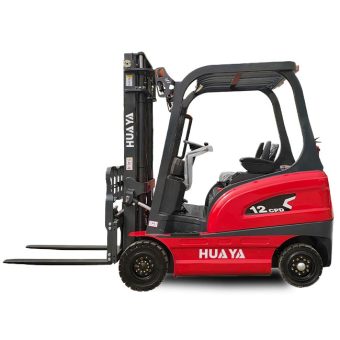
News
Forklifts, with their remarkable ability to lift and move heavy loads, play a pivotal role in various industries. Curiosity about the basic controls of a forklift often sparks interest among operators and those fascinated by industrial machinery. Understanding these controls is crucial for ensuring workplace safety and optimizing operational efficiency.

Effective forklift controls are the linchpin of workplace safety. They empower operators to maneuver the machine with precision, preventing accidents and potential damage. A deep dive into the intricacies of forklift controls reveals their significance in maintaining a secure work environment.
To comprehend the controls, one must first understand the anatomy of a forklift. These powerful machines consist of various components, each serving a unique purpose. Exploring the key elements lays the foundation for a comprehensive understanding of forklift operations.
The control panel of a forklift comprises levers, pedals, and joysticks, each responsible for different aspects of the operation. These components work in harmony, allowing operators to navigate, lift, and lower loads efficiently.
Levers are instrumental in controlling the movement and direction of the forklift. Understanding how to manipulate these levers is fundamental to executing precise maneuvers in a workspace.
Pedals govern speed, braking, and overall control of the forklift's movement. Mastering the coordination between pedals is essential for operators to navigate safely through diverse environments.
Joysticks offer a high degree of precision, particularly in lifting and lowering loads. Their versatile nature makes them indispensable for operators aiming for accuracy in material handling.
Alongside mastering the controls, forklift operators must adhere to safety protocols. This section delves into best practices that ensure a secure work environment, emphasizing the operator's responsibility.
Competence in operating a forklift is achieved through comprehensive training and certification programs. These initiatives equip operators with the skills needed to handle the controls proficiently.
Preventing accidents and damage involves steering clear of common mistakes. This section highlights errors that operators should be mindful of to maintain a safe working environment.
Let's explore the heart of the matter—the forklift control panel. Understanding the arrangement and functions of the controls is pivotal for anyone operating these machines.
Monitoring vital information is facilitated by forklift gauges. This section sheds light on the significance of these gauges and the information they provide to operators.
Ensuring the longevity of forklift controls requires regular maintenance. This section offers practical tips to prolong the lifespan of the controls and the overall machine.
Adapting controls to different conditions is a crucial aspect of forklift operation. This section discusses how environmental factors impact control usage and how operators can adjust accordingly.
Enhancing operator comfort and efficiency is achieved through ergonomic design. This section explores how forklift controls are designed with the operator's well-being in mind.
As technology advances, so do forklift controls. Automation and smart technologies are shaping the future of these machines, providing a glimpse into what lies ahead.
Forklift controls often adhere to industry standards, ensuring consistency and ease of use across different models and brands.
Regular inspections are crucial. Daily checks are recommended, with more thorough inspections scheduled weekly or monthly, depending on usage.
No, only certified and trained individuals should operate forklifts to ensure safety and prevent accidents.
Improper use can lead to accidents, injuries, and damage to goods and equipment, emphasizing the importance of proper training.
Yes, advancements in technology are introducing alternatives like automated controls and semi-autonomous features.
Some forklift models allow customization to suit specific operational requirements. Consult with manufacturers or experts for guidance.
In conclusion, mastering the basic controls of a forklift is not just a skill; it's a responsibility. By understanding the intricacies of levers, pedals, joysticks, and safety measures, operators contribute to a safer and more efficient workplace. Continuous learning and adherence to best practices ensure a future where forklifts remain indispensable tools in various industries.
Previous: What is a forklift used for?



